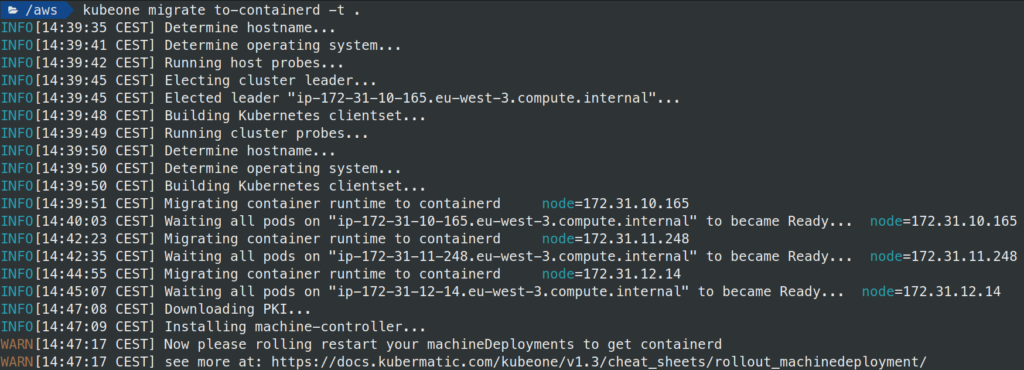Kubermatic Extends Open Source K8s Management Platforms
Kubermatic has updated both the open source Kubermatic Kubernetes Platform (KKP) and KubeOne platform for cluster life cycle management as part of an effort to make it simpler to manage fleets of Kubernetes clusters across a distributed computing environment.
Version 2.8 of KKP now provides integration with a range of open source management tools including Prometheus, Grafana, Loki and Cortex that are already widely used to manage Kubernetes clusters.
Other new capabilities include templates for managing clusters, metering integration, enhanced Open Policy Agent (OPA) capabilities and tools to optimize use of Spot instances on Amazon Web Services (AWS) clouds.
Version 1.3 of KubeOne, meanwhile, adds an application programming interface (API) to the platform in addition to managed support for encryption providers and automated migrations from the Docker container runtime to containerd. Version 1.20 of Kubernetes deprecated support for Docker (dockershim) as an underlying container runtime. Version 1.23 of Kubernetes will entirely remove Docker as a container runtime. Instead, a container runtime compatible with Container Runtime Interface (CRI), such as containerd, will be required.
Finally, KubeOne 1.3 replaces all existing structs based on the Go programming language with YAML-based add-ons.
Kubermatic CEO Sebastian Scheele says many organizations are starting to reach a crossroads as they gain more experience managing large numbers of Kubernetes clusters. Rather than having to programmatically manage every aspect of Kubernetes, there are plenty of instances where it’s simply easier to leverage a management platform that provides access to graphical user interface (GUI).
In other cases, IT administrators that lack programming skills are now asked to assume responsibility for managing fleets of Kubernetes clusters. IT organizations typically encounter these issues once they start managing ten or more clusters, notes Scheele.
When it comes to evaluating management platforms, Scheele says IT teams should pay attention to how well those platforms scale up and out to manage highly distributed Kubernetes clusters that could be running at the edge, in one of several clouds or in an on-premises IT environment. IT teams should also take note of the amount of compute resources any given management platform may require, he adds.
In general, the Kubernetes management issue has not yet come to a head simply because the overall percentage of container-based applications is still relatively low, notes Scheele. However, Gartner forecasts that by next year 75% of enterprise IT organizations will have deployed containerized applications in production environments.
In the meantime, platforms such as KPP and KubeOne are designed to make Kubernetes more accessible to a broader base of IT professionals. In many cases, organizations have not yet adopted Kubernetes because they perceive the platform is too complex to manage. That, in turn, then reduces the number of container applications they might otherwise deploy.
One way or another, Kubernetes clusters are on the cusp of becoming a mainstream IT platform. The challenge is making it as simple as possible for the average IT organization to embrace the platform originally designed for web-scale companies with armies of software engineers.





